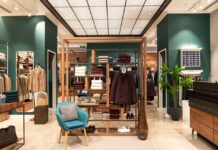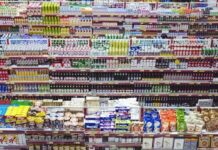There’s more to the barcode than meets the eye—or ear—with the familiar, expected “beep” when scanned. It revolutionised how the world conducts business across industries from retail and hospitality to healthcare, logistics and more, making transactions and tracking faster, easier, and even safer. The barcode has opened the door to more innovation including the next generation of solutions such as the QR code, radio frequency identification (RFID), fixed industrial scanning and machine vision.
Like any great invention, the barcode seems like a natural part of everyday life, as if the black and white “zebra” pattern appearing on just about everything that is bought, sold or tracked has always existed. But it was decades in the making, born by the grocery sector’s need to bust long checkout queues. Retailers and brands needed a solution to automatically capture product information, reduce human error and manage the explosive growth of post WWII baby boomer shoppers.

Enter George J. Laurer, an IBM engineer who created the barcode when he reimagined a bulls-eye concept drawn in the sand by Joe Woodland in the 1940s, transforming it into the Uniform Product Code (UPC), today known as GS1 Global Trade Item Numbers (GTINs) — aka the barcode. It’s now estimated that the barcode is used 10 billion times a day globally. The barcode’s impact cannot be underestimated—it’s as clear as black and white.
Hello World: My Name is 
The modern zebra barcode was selected by the Symbol Selection Committee in 1973 and made its public debut in 1974 when Marsh’s Supermarket, an Ohio grocer, installed the first UPC scanner to help reduce customers’ checkout time for a better experience, and improve associate productivity. Barcodes have been delivering ever since that first scan—of a pack of Wrigley’s Chewing Gum—making a permanent mark on the worldtransforming retail, how we shop and more.
🏆
The 2024 Creative Retail Awards are open for entries.
The Creative Retail Awards are much more than a mere accolade; they represent the pinnacle of achievement in the retail industry. Garnering a nomination or winning one of these awards is a testament to innovation, excellence, and leadership.
www.creativeretailawards.com
Whether the information in a barcode is read via a multi-plane, fixed or handheld mobile scanner, the barcode boosts efficiency, flexibility and convenience, helping customers get in-and-out of stores as quickly as possible, as most say they prefer. It also enables the blended “buy online pick-up in store” shopping experience consumers lean toward.
The simple one-dimensional barcode has helped evolve how we shop as it continues to evolve dimensionally. If you’ve taken a photo of a QR code with your smartphone for a menu, ticket or other item, you’ve scanned a 2D barcode which holds codes in squares rather than the original one-dimensional lines of the traditional barcode. Manufacturers often use 3D barcodes, which hold even more information and are engraved into machinery, reading information and scanning for anomalies via fixed industrial scanning and computer vision.
Schnucks, one of the largest privately held, family-owned US supermarket chains is transitioning from the traditional 1D barcode made up of lines and spaces and moving to 2D barcodes. And of course, there’s the “Amazon-Go” option where you simply walk in, grab items and walk out without scanning or physically paying for items. But you do need to scan a QR code to enter as artificial intelligence, computer vision, and data pulled from multiple sensors ensure you’re only charged for what you walk out with.
RFID takes barcodes to the next level where line of sight is not easy, accurately and efficiently tracking inventory in retail, the warehouse, transportation and logistics, and equipment, medications–even patients– in healthcare. In fact, barcodes and scanners are used daily to accurately and quickly match patients to their records, medication and treatments, ensuring errors are kept to a minimum, while patients receive the right care. And this is just one example of its many benefits in patient care. And to think, it all started with a simple barcode in a grocery checkout.
Newer Technology Reads the Older Barcode
Fixed industrial scanning, one of the hottest industrial automation trends today, reads barcodes on items moving along conveyor belts or order fulfillment lines in distribution centres and warehouses, providing a status update to logistics managers or possibly even customers.
In addition to verifying that an item has passed by a checkpoint, which is the tracking component, these scanners might be set-up to verify the accuracy of product or package labels, automatically confirming items in an order have been picked and passed along for packing, or even facilitate shipment routing. If configured for machine vision, these scanners could be used to identify items that aren’t acceptable for return per quality standards defined in the system. The machine vision system – meaning the smart cameras or sensors – positioned either overhead or in-line with the conveyor belt can learn to recognise when a part is mislabeled or there is a discrepancy in the design when compared to the blueprints.
As for the future, the barcode is here to stay. Its journey is not even a century old, and we have seen such innovative and life-saving developments that its value will only increase, being critical to the success of global industries and re-writing the future in lines, small squares, radio frequencies and much more.
Learn more about barcode technology here and here.
















